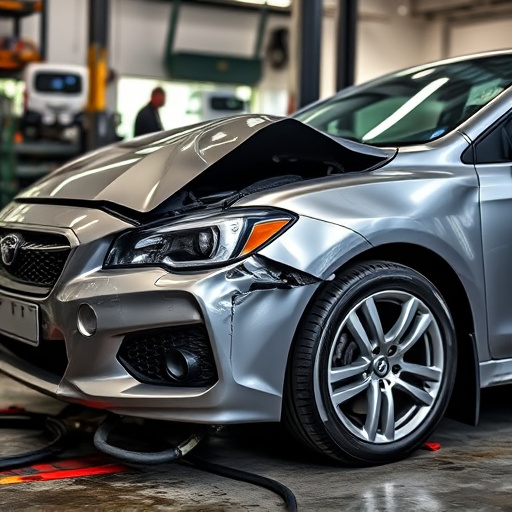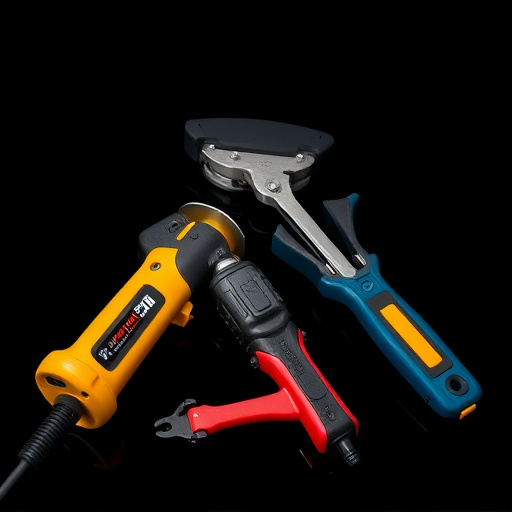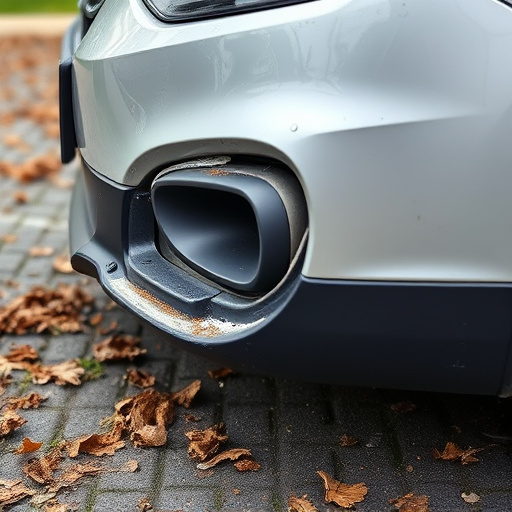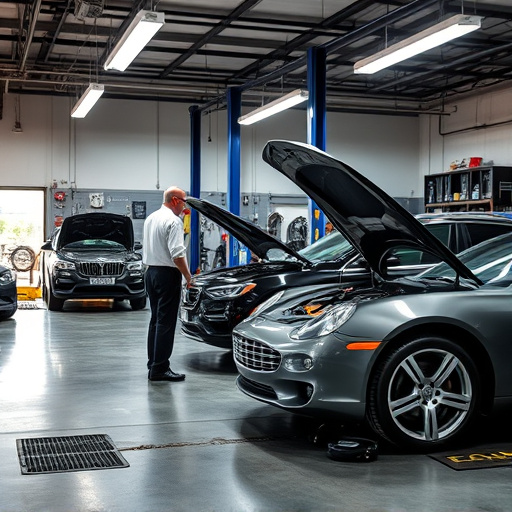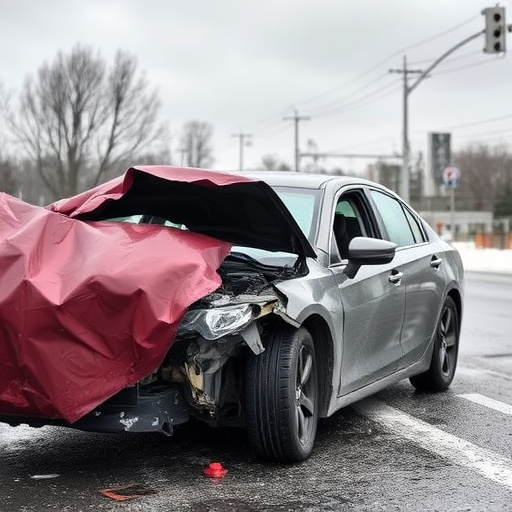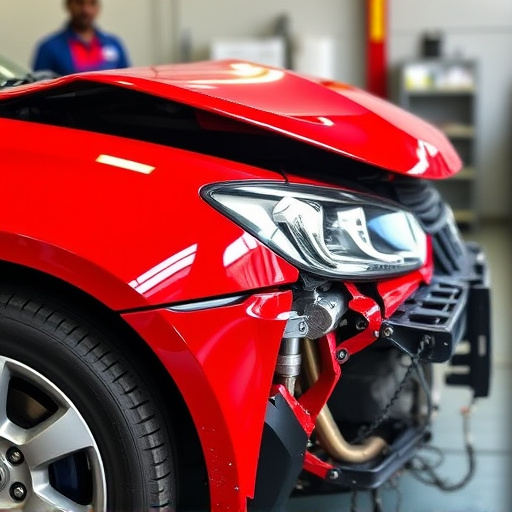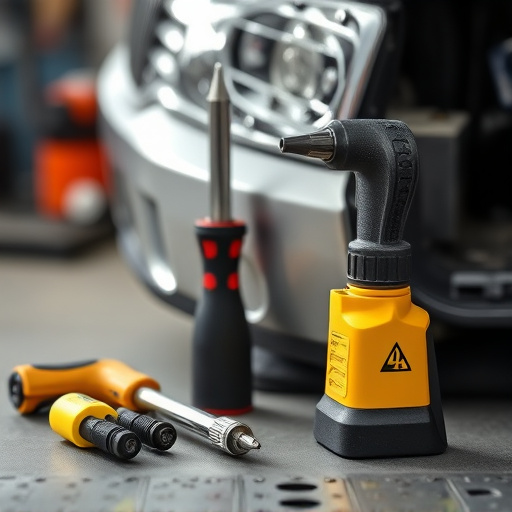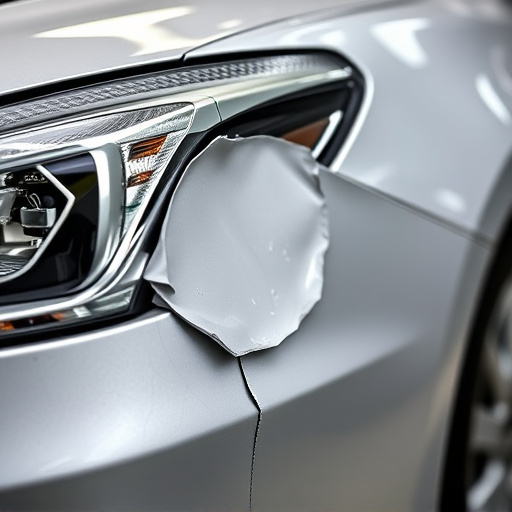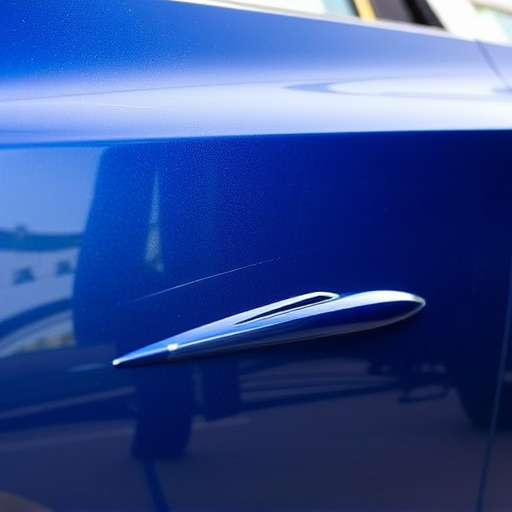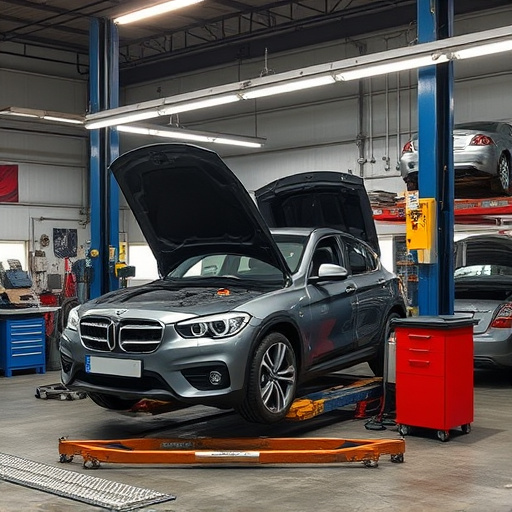Wheel alignment after collision is crucial for vehicle safety and performance. It corrects suspension misalignments caused by impact, preventing uneven tire wear and enhancing handling & stability. Regular alignments extend tire life, improve fuel efficiency, and save on future repairs, making it essential for proactive automotive maintenance post-collision.
“After a collision, proper wheel alignment is crucial for both safety and vehicle performance. This article delves into the fundamentals of wheel alignment, exploring the significant impact of neglecting it post-collision repairs.
We’ll discuss why timely alignment is essential, offering valuable prevention tips to ensure your vehicle stays in top shape. Avoid costly issues down the line by understanding the implications of skipping wheel alignment after collision-related work.”
- Understanding Wheel Alignment: The Basics
- Impact of Skipping Alignment After Collision Repairs
- Importance of Timely Wheel Alignment and Prevention Tips
Understanding Wheel Alignment: The Basics
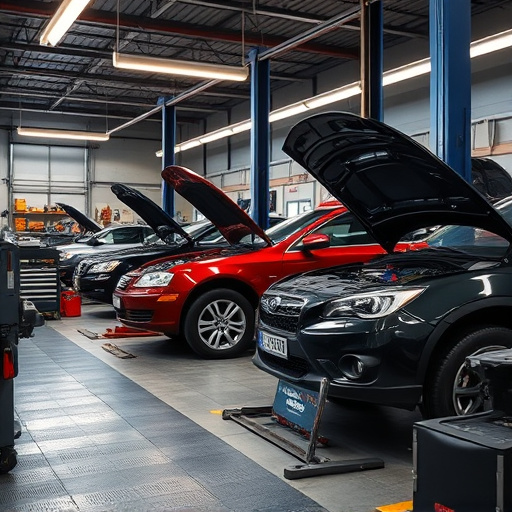
Wheel alignment, also known as wheel trimming or tracking, is a fundamental service in automotive care that ensures your vehicle’s wheels are properly positioned relative to each other and to the road surface. It involves adjusting the suspension components to achieve the optimal tire and wheel angle specified by the vehicle manufacturer. This process is crucial, especially after any collision or impact that might have disrupted the alignment. When you bring your car into a vehicle body shop for dent repair or other auto repair services following a collision, having wheel alignment as part of the post-repair process is essential to ensure safe and efficient driving.
Proper wheel alignment enhances several aspects of your vehicle’s performance and safety. It optimizes tire wear by ensuring equal pressure distribution across all tires, leading to longer tire life. Well-aligned wheels also contribute to improved handling and stability, allowing for better cornering, reduced chance of skidding or loss of control, and a smoother ride. Furthermore, it can prevent uneven tire wear, which is often caused by improper alignment, saving you money on frequent tire replacements.
Impact of Skipping Alignment After Collision Repairs
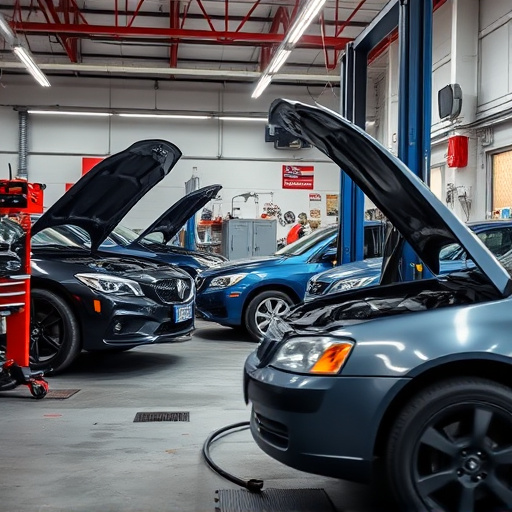
When a vehicle undergoes collision repairs, the initial focus is typically on fixing structural damage and ensuring safety. However, skipping the wheel alignment process after these repairs can have significant implications for both the vehicle’s performance and long-term durability. Wheel alignment is not just about making your car straight; it involves precise adjustment of wheels to ensure they are set at the correct angle relative to each other and the vehicle’s chassis.
In an automotive body shop, especially one specializing in classic car restoration or general automotive restoration, proper wheel alignment is crucial for maintaining optimal tire wear, enhancing handling, and improving overall driving experience. Skipping this step can lead to uneven tire wear, poor gas mileage, and reduced control over the vehicle, which are issues that extend beyond aesthetics. Over time, these problems compound, potentially causing more serious and costly damage that could have been avoided with a simple wheel alignment after collision repairs.
Importance of Timely Wheel Alignment and Prevention Tips
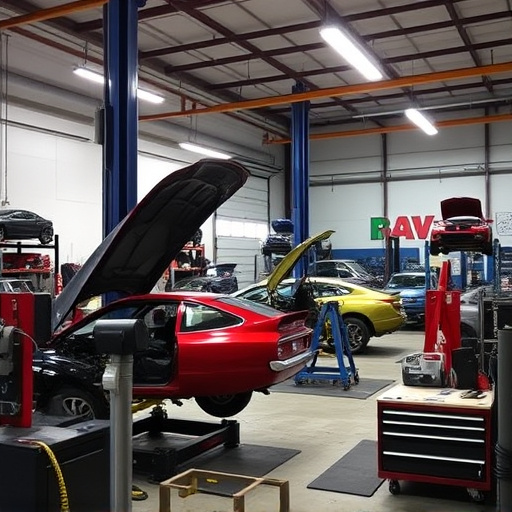
The importance of timely wheel alignment after collision repairs cannot be overstated. When a vehicle undergoes a collision, the impact can cause misalignment in the wheels and suspension components. If left unaddressed, this misalignment can lead to a host of issues down the line, including uneven tire wear, poor handling, and reduced fuel efficiency. Regular wheel alignment is an essential part of auto maintenance that helps ensure your vehicle performs optimally and safely on the road.
To prevent these problems, it’s crucial to follow recommended scheduling for wheel alignments after any significant car body repair, especially in cases of collision damage. This proactive approach not only extends the lifespan of your tires but also contributes to the overall health of your vehicle. By addressing wheel alignment issues early, you can save on costly auto body repairs and maintain a smoother, more efficient driving experience. Remember, proper auto maintenance is key to keeping your vehicle in top condition, even after an accident.
Skipping wheel alignment after collision repairs can lead to serious driving hazards, compromising your vehicle’s safety and handling. The impact of improper alignment includes uneven tire wear, poor steering control, and reduced fuel efficiency. To prevent these issues, it’s crucial to have wheel alignment checked and adjusted promptly after any collision-related repairs. Regular maintenance ensures optimal performance, enhances road safety, and extends the lifespan of your tires. Remember, a timely wheel alignment is an essential part of post-collision care for a smooth and secure driving experience.
